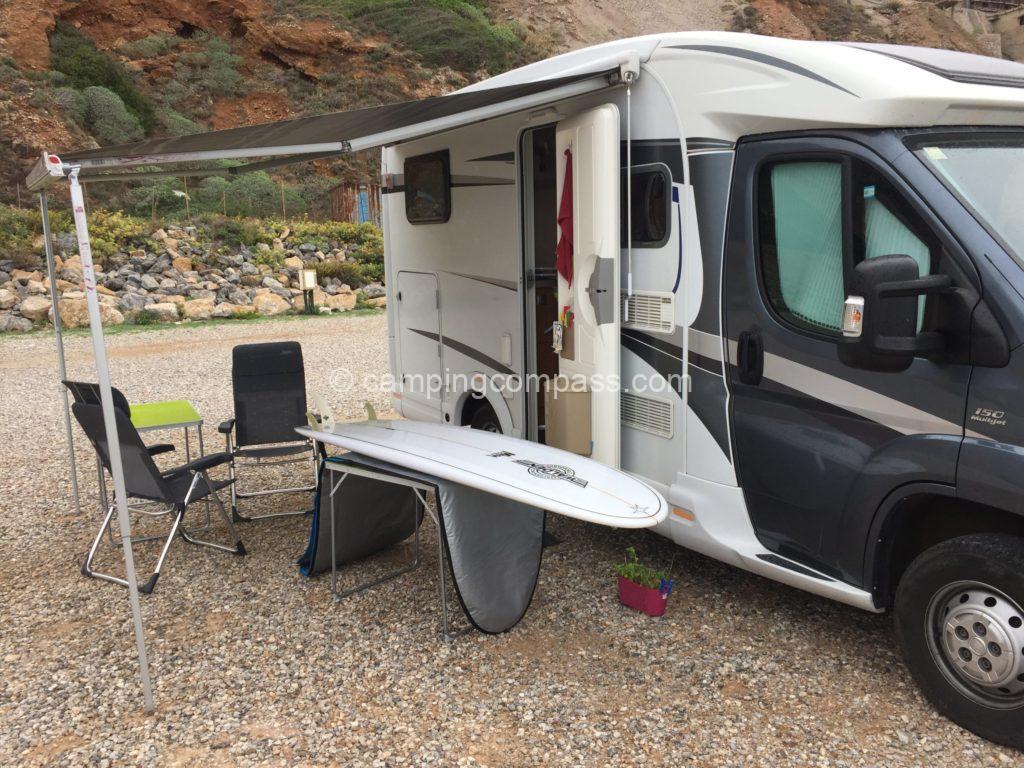You can mount just about anything you can imagine on a motorhome or in a motorhome. Everyone uses their motorhome in a different way, goes on different trips or has different habits and needs. Motorhome accessories cost quite a lot of money, so I think it’s a good idea to first make sure you really need and use the item. I have written a quick article on must-have motorhome accessories that you should have regardless of your camping needs or experience.
Motorhome Awning
Awnings are most often from two companies. Fiamma or Thule. They both work on the same principle. You turn the handle to extend the awning. If it’s extended roughly half a metre, you set the awning legs on the ground. You can then open it completely.
“It is essential to always anchor the awning firmly to the ground with the straps.”
I know several people who have had their awning taken away by the wind, damaging not only the awning itself but also the motorhome body.
In addition to manual operation, the awning can also be operated electrically. This is common with large motorhomes.
For campervans there are also simpler awnings that do not have the entire operating mechanism on the crank and need to be “unfolded” manually. Such an awning takes up less space on the van and is less prone to damage to the van as it has no fixed mechanism.
The awning can be anchored not only on the ground but also on the motorhome body. There are special mounts for this, which can be mounted either permanently or with suction cups. This is quite convenient if the ground is very hard and no peg can be driven into it.
We only unfold the awning when we use it. We still fold the awning up for the night or for when we go away from the motorhome. It has happened to us that while we weren’t at the motorhome a huge wind came in from the sea, luckily we had the awning folded but we were looking for a table and chairs on the beach.
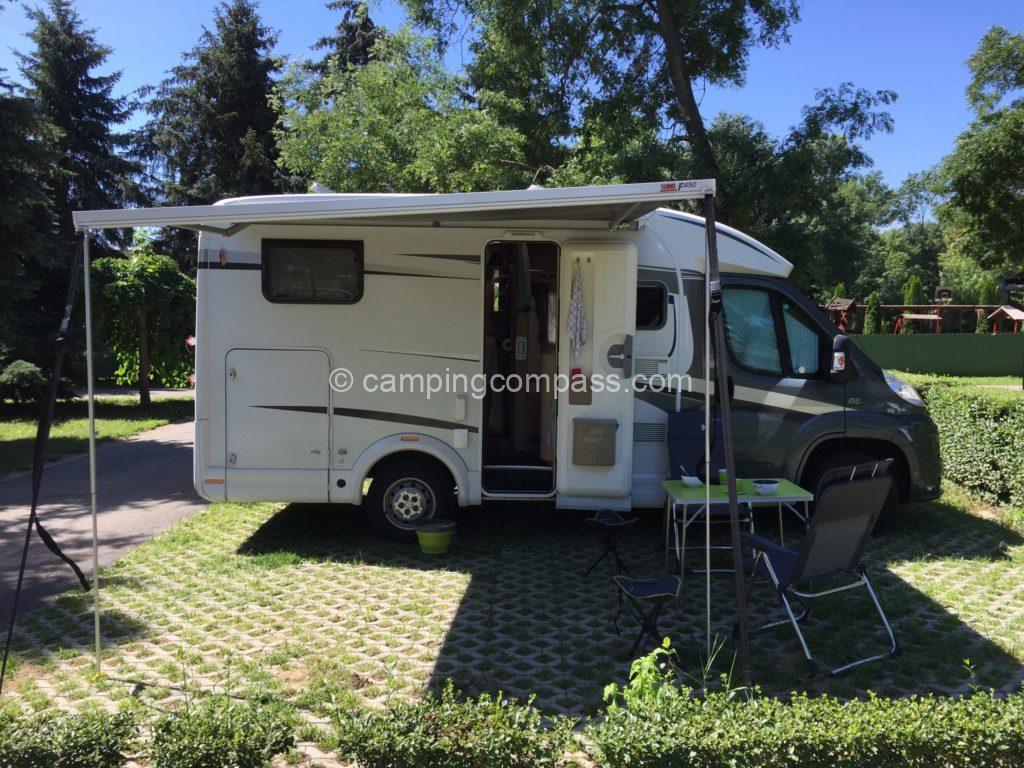
The electric step
Both motorhomes and motorhomes are often quite high off the ground. An electric step allows for more comfortable entry and exit. The step is operated either automatically or manually by a button on the door of the motorhome or van. The automatic step can be pulled up when the door is unlocked or opened, for example.
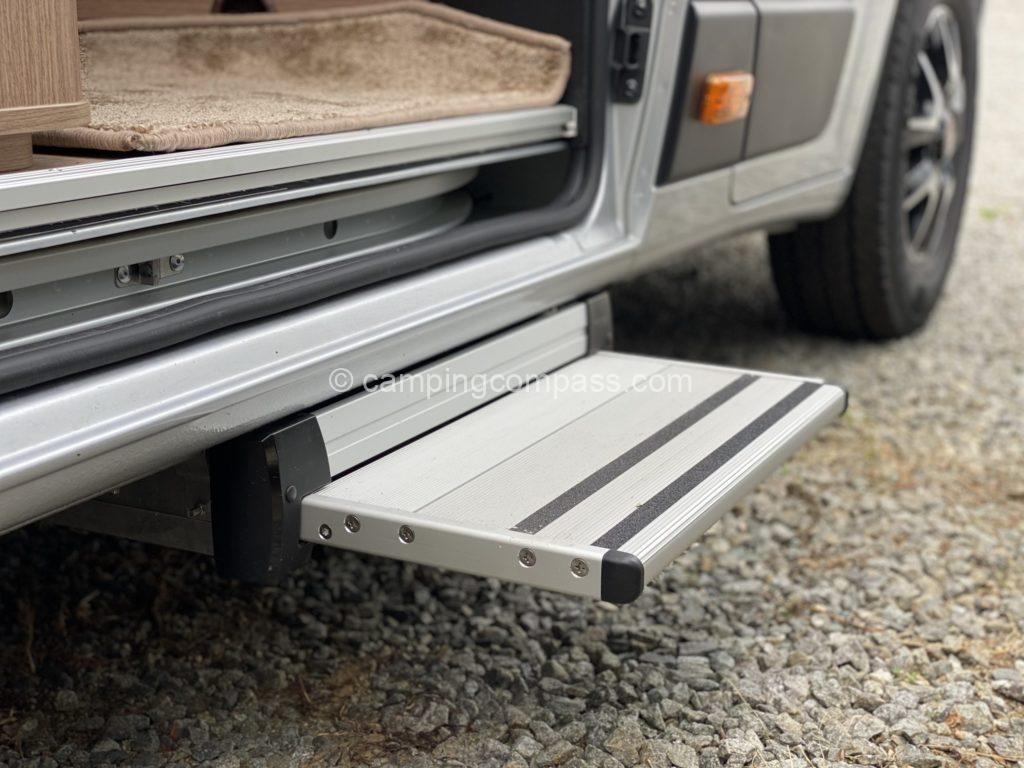
Bicycle rack
Bicycles can be carried either inside the motorhome in the garage or in the rear of the motorhome or van. There are special holders for the garage to ensure that the bikes stay in place in the garage.
A rack for up to 5 bikes can be mounted on the rear wall of the motorhome or the rear door of the van. In most cases, the rack is made by Fiamma or Thule. Both work in a very similar way. The rack can also be used for drying wetsuits or attaching an additional box for other sports junk.
“The bike rack counts towards the total length when buying ferry tickets”
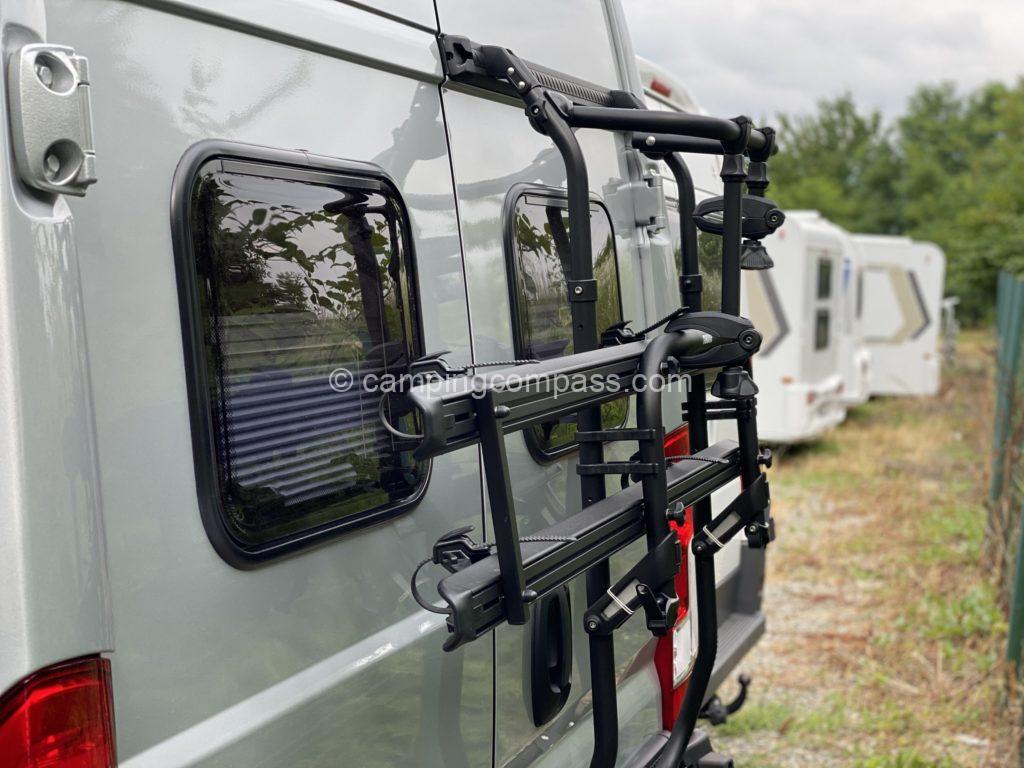
Motorbike carrier
Large and luxurious motorhomes have a pretty decent garage carrying capacity. It is therefore also possible to fit a small motorbike or scooter in the motorhome garage. There is a special rack with a ramp to push the motorbike up.
In addition, a motorcycle carrier with a ramp can be attached to the rear of the motorhome chassis.
As the weight of the motorbike and the rack counts towards the total weight, this is only suitable for motorhomes over 3.5t, otherwise a trolley is better for the motorbike.
I cover more about the endorsement of motorhomes in this article.
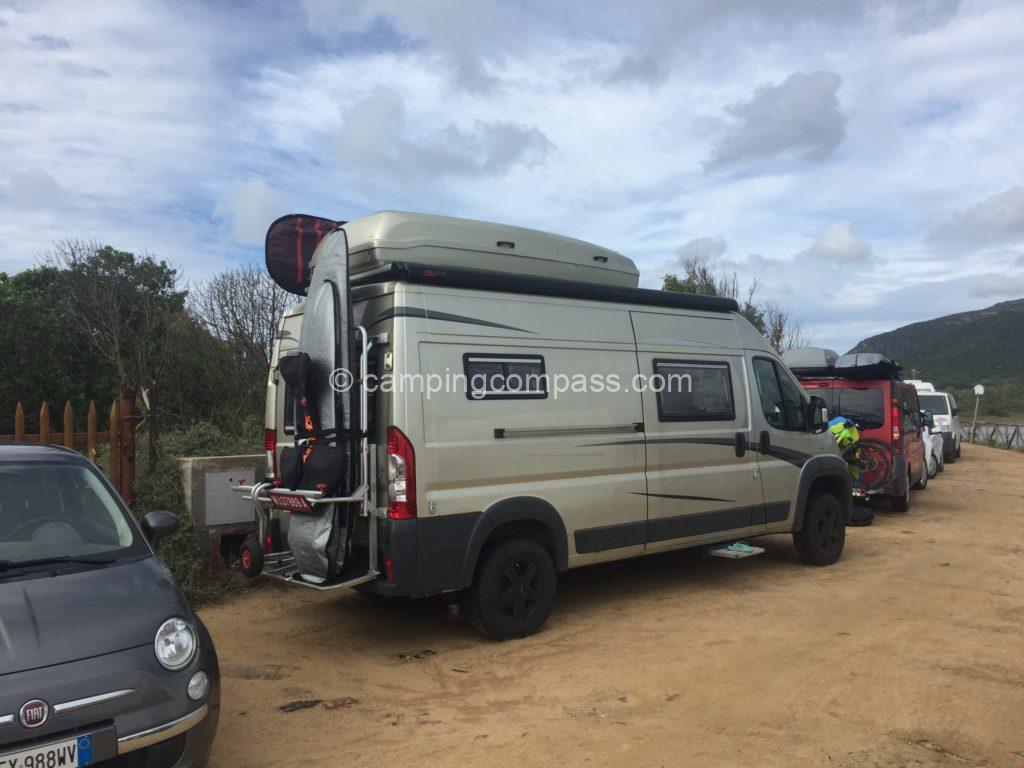
Towbar
A towbar can be ordered and fitted to any motorhome, motorhome or campervan. It is common to tow a jet ski, boat or motorised trolley behind the motorhome. Some motorhomers tow a trolley with a small car behind the huge motorhome, which they use to travel around the area.
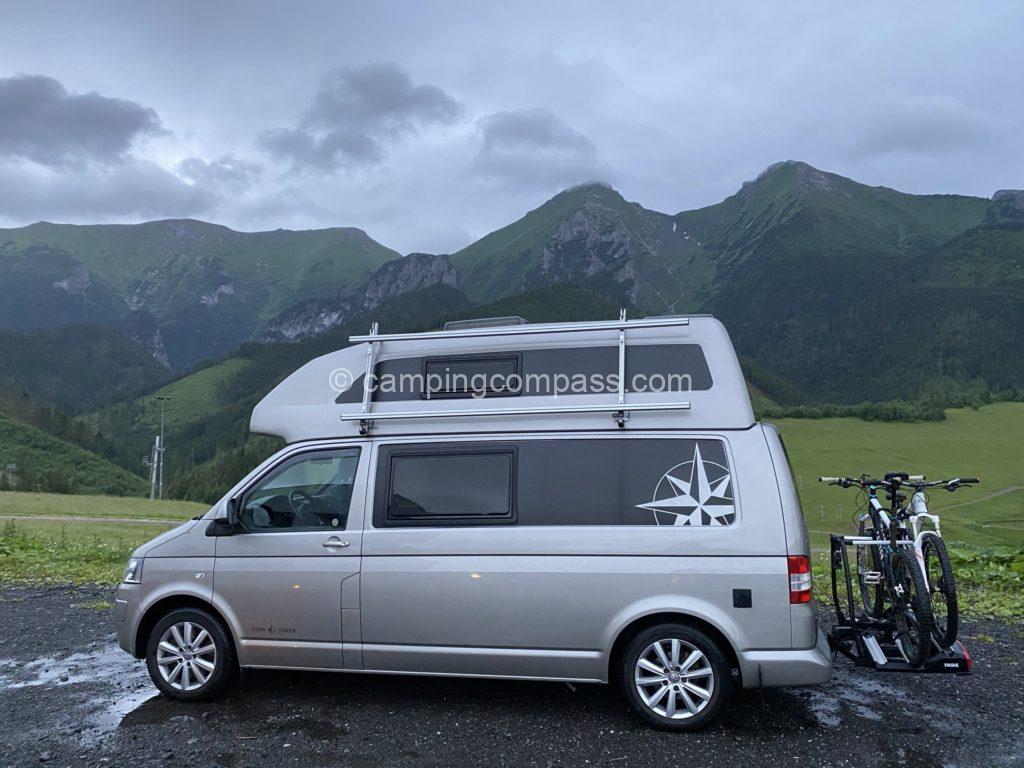
Roof rack
A roof rack, or garden rack, can be mounted not only on a campervan and camper van, but also on a motorhome. There’s plenty of room on the roof of a campervan until you put solar panels on it
“I therefore recommend that you have the roof rack fitted to the motorhome roof before fitting the solar panels”
As I mentioned in a previous article, you can climb onto the roof of the motorhome using a folding ladder or a special ladder can be fixed to the back of the motorhome.
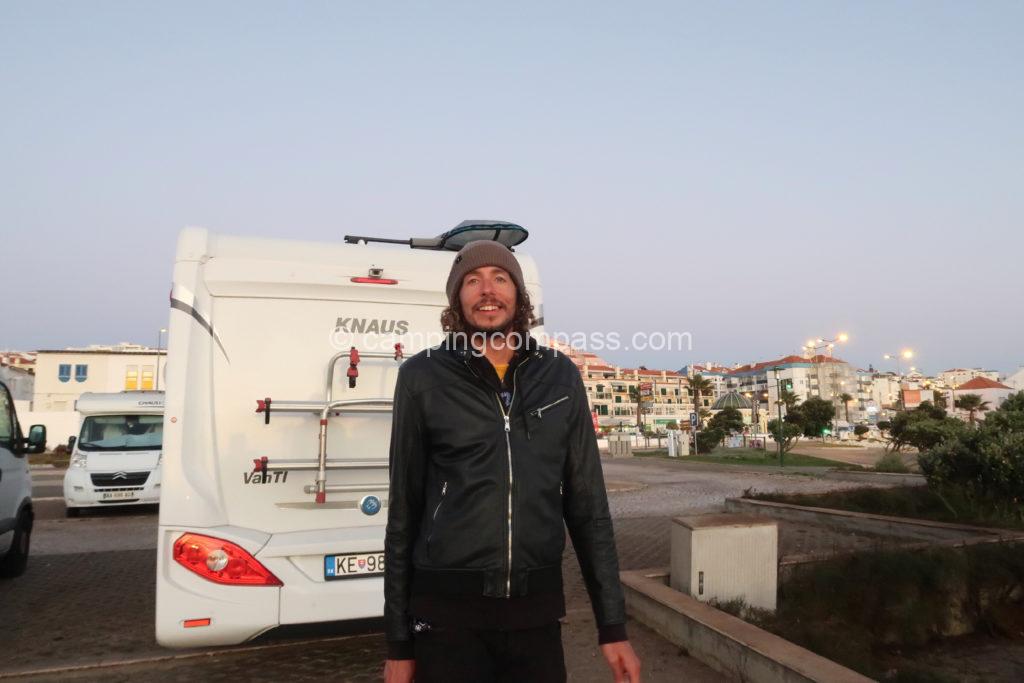
Parking camera and parking sensors
Sensors and a camera are now commonplace in cars. A camera and sensors must be retrofitted to the motorhome or motorhome. The camera can be fitted by any motorhome service centre, and the display for the camera will be included in the car radio with navigation.
“A parking camera is a pretty good thing, because most of the time the motorhome doesn’t have a rear window”
The parking camera can also be used as a rear-view mirror while driving.
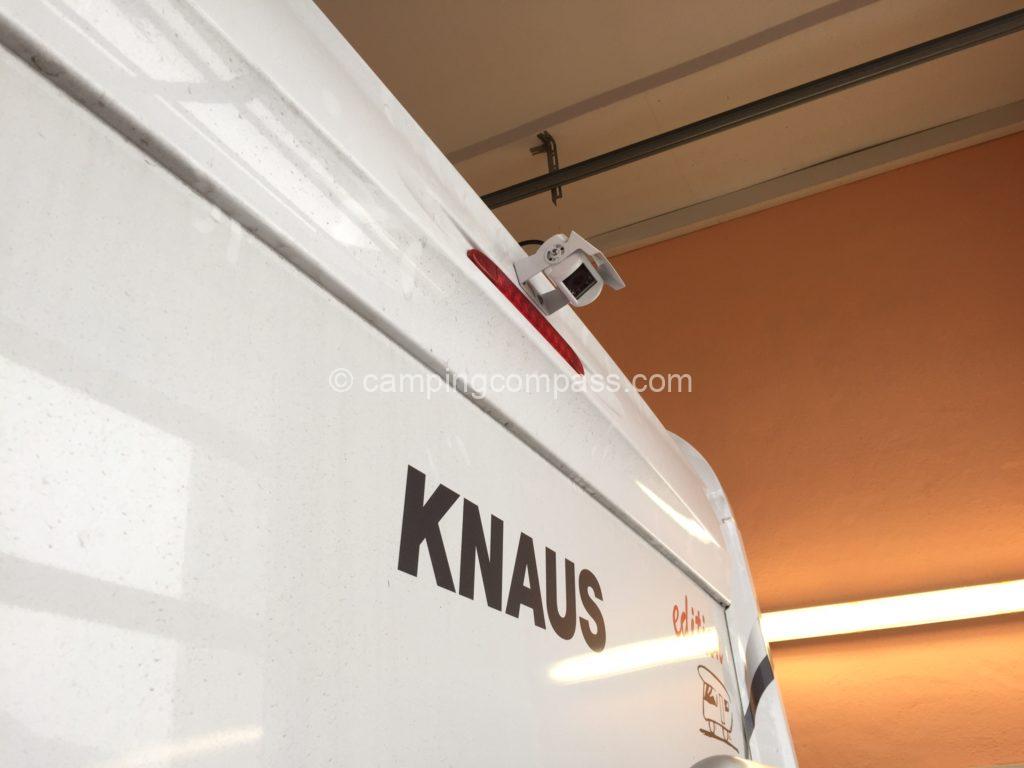
Camping furniture
There are plenty of camping chairs and tables on the market. I recommend choosing comfortable chairs and a sturdy table with height-adjustable legs. The ground at a campsite or beach is rarely 100% level.
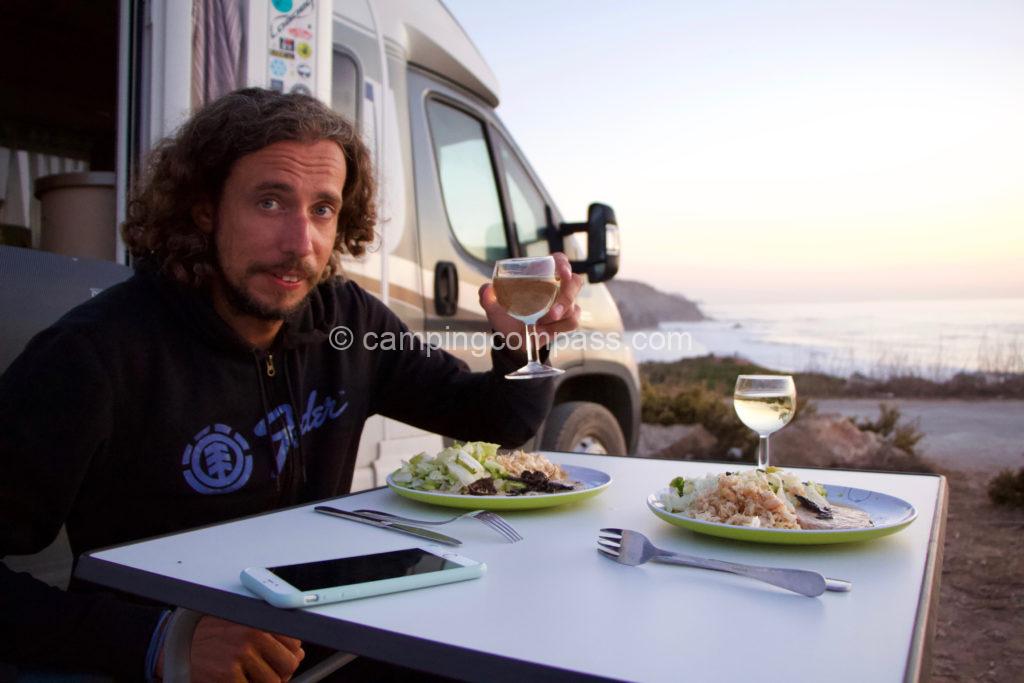
The table and chairs are stowed in the motorhome’s garage, ideally you should buy a fixing system for the table and chairs that attaches them to the back wall of the garage, for example. They will always be close at hand and won’t fly from side to side when driving in the garage.
Predstan
A forestay is an extension of the awning on the side walls and front wall. This creates an additional, relatively large seating area. If you’re planning on spending multiple days at one campsite and need more space, the predstan might be just the thing for you. It will allow you to keep all your camping furniture, TV and other things, for example, out of the rain. A lot of people use a tent when camping in the colder season or in winter.
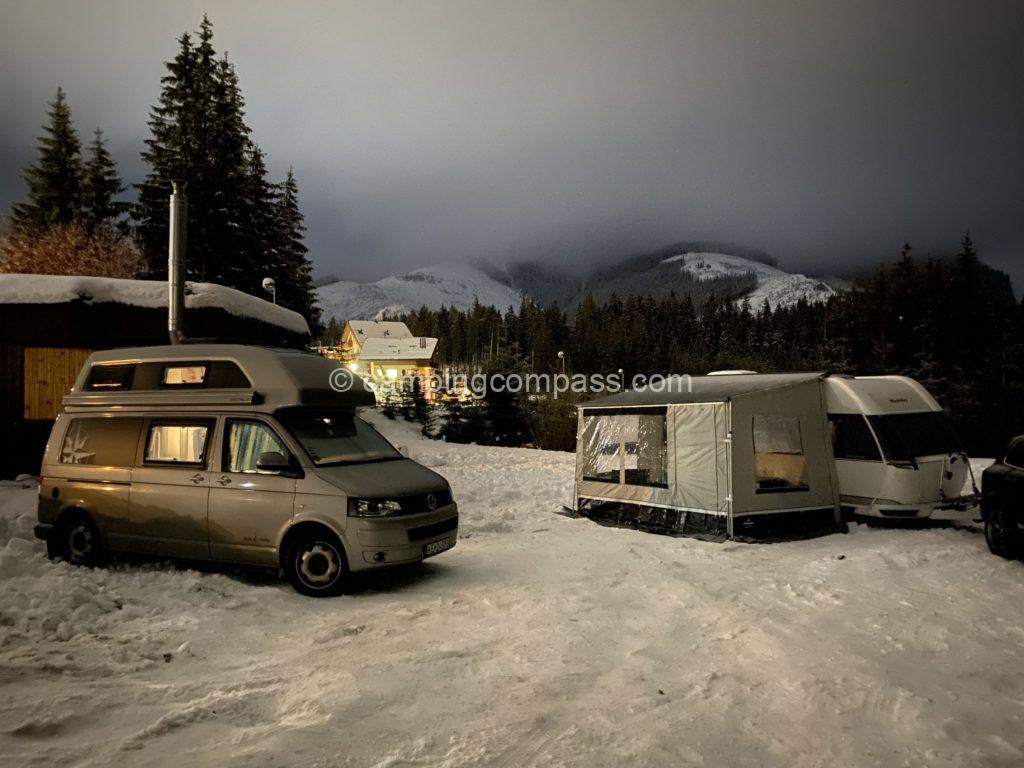
Aligning the motorhome and the support
It happens that your place where you want to park is crooked. You need to level the motorhome so your spaghetti and ketchup doesn’t slide off the table.
Either the wedges you climb up with the motorhome or the supports mounted directly on the chassis are used to level the motorhome. The supports can be mechanical, electric or hydraulic. Mechanical ones work on the crank, electric and hydraulic props pull out automatically.
“It may look strange now, but we don’t carry wedges with us”
If it’s crooked somewhere, we go park elsewhere. I most often bring wedges in the trunk if we’re going to an event at a campground, where I usually can’t choose a parking spot as freely as when we’re camping off-site.
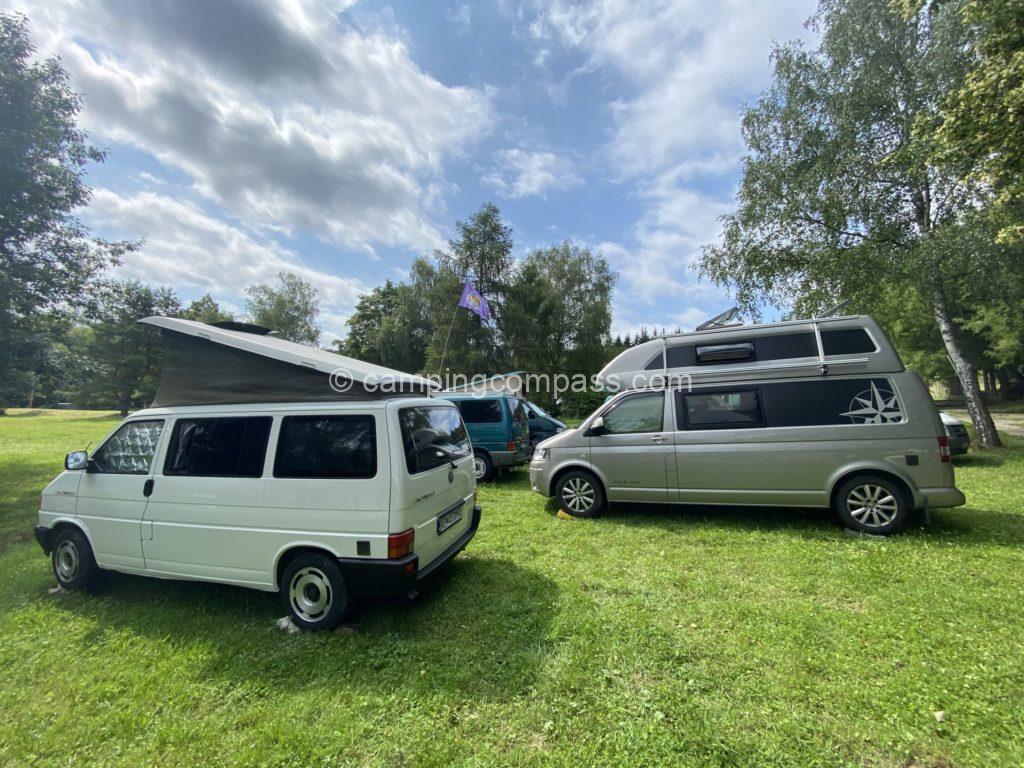
The Truma mobile app has a feature in it for finding out the current curvature of a parked motorhome. It works pretty cool and we use it almost all the time when we park. Sometimes all we have to do is move 20cm to the right and straight away the van is standing straight. If you’re parked on sand somewhere, just rake a bit of sand under one wheel so that wheel is in the hole.
Garage organisers
The motorhome garage is one huge room with one or two doors. Without any mended in it, the shelves make it look like a courier van after a crash.
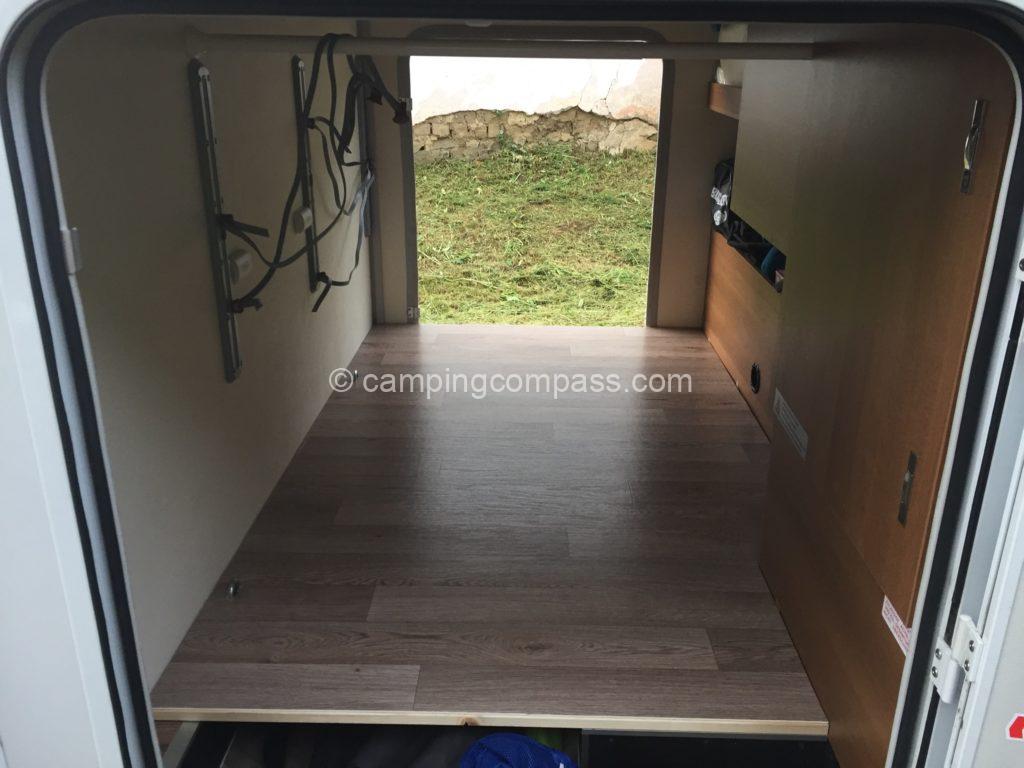
Every motorhomer carries different things in the garage, so there are lots of ways to divide up this garage space. There are companies that will custom make you the shelving system you need. Or make the system your own from materials available from a DIY store. But I already mentioned that in the first part of this casual guide.

